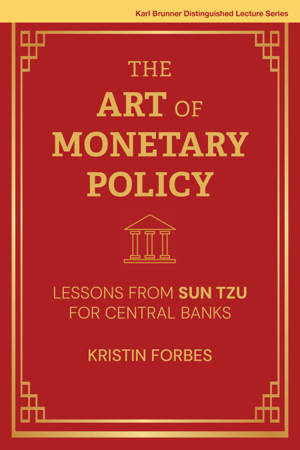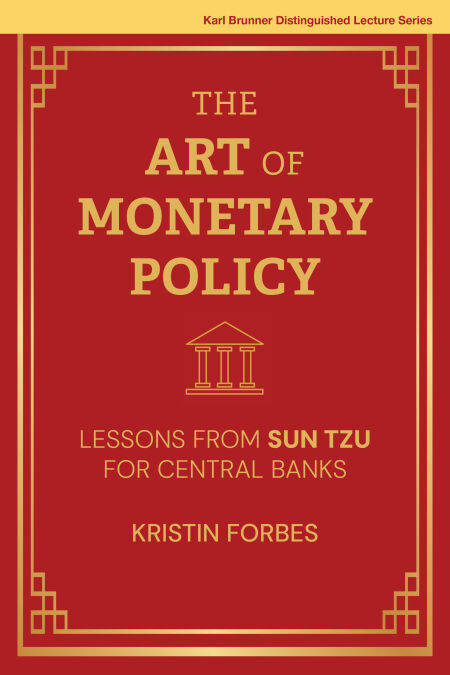
- Afhalen na 1 uur in een winkel met voorraad
- Gratis thuislevering in België vanaf € 30
- Ruim aanbod met 7 miljoen producten
- Afhalen na 1 uur in een winkel met voorraad
- Gratis thuislevering in België vanaf € 30
- Ruim aanbod met 7 miljoen producten
Zoeken
€ 29,56
+ 29 punten
Uitvoering
Omschrijving
Strategic lessons for monetary policy from the last two tumultuous decades based on insights from Sun Tzu, the Chinese philosopher and author of The Art of War.
When central banks were forced to innovate and develop a multifaceted set of new weapons in response to the 2008 Global Financial Crisis and 2020 COVID-19 pandemic, the result was a substantial expansion in their authority and reach. In The Art of Monetary Policy, Kristin Forbes draws lessons for monetary policy from the last two decades from the principles of Sun Tzu, the author of The Art of War, a Chinese philosopher and military strategist from the sixth century BC.
Tzu proposed several key principles for success—tenets that apply to monetary policy as well as the battlefield today: (1) plan in advance for the next battle; (2) accept and adapt to the inevitability of powerful, external shocks outside your control; (3) establish a strong tactical position; (4) develop a variety of weapons that can be combined for different maneuvers and situations; (5) maintain flexibility so that you can quickly modify your strategy; and (6) consider the longer-term costs when evaluating the tradeoffs of different approaches. These principles provide insights into what central banks did (and did not) do well over the last two decades, as well as how they should deploy interest rates, balance sheets, emergency support programs, forward guidance, and macroprudential tools in the future.
While the optimal strategy in both war and monetary policy is more of an “art” than a science, adopting these principles can improve our ability to battle the next crisis, as well as build more resilient economies during peaceful periods.
When central banks were forced to innovate and develop a multifaceted set of new weapons in response to the 2008 Global Financial Crisis and 2020 COVID-19 pandemic, the result was a substantial expansion in their authority and reach. In The Art of Monetary Policy, Kristin Forbes draws lessons for monetary policy from the last two decades from the principles of Sun Tzu, the author of The Art of War, a Chinese philosopher and military strategist from the sixth century BC.
Tzu proposed several key principles for success—tenets that apply to monetary policy as well as the battlefield today: (1) plan in advance for the next battle; (2) accept and adapt to the inevitability of powerful, external shocks outside your control; (3) establish a strong tactical position; (4) develop a variety of weapons that can be combined for different maneuvers and situations; (5) maintain flexibility so that you can quickly modify your strategy; and (6) consider the longer-term costs when evaluating the tradeoffs of different approaches. These principles provide insights into what central banks did (and did not) do well over the last two decades, as well as how they should deploy interest rates, balance sheets, emergency support programs, forward guidance, and macroprudential tools in the future.
While the optimal strategy in both war and monetary policy is more of an “art” than a science, adopting these principles can improve our ability to battle the next crisis, as well as build more resilient economies during peaceful periods.
Specificaties
Betrokkenen
- Auteur(s):
- Uitgeverij:
Inhoud
- Aantal bladzijden:
- 136
- Taal:
- Engels
- Reeks:
Eigenschappen
- Productcode (EAN):
- 9780262052351
- Verschijningsdatum:
- 13/04/2026
- Uitvoering:
- E-book
- Beveiligd met:
- Adobe DRM
- Formaat:
- ePub

Alleen bij Standaard Boekhandel
+ 29 punten op je klantenkaart van Standaard Boekhandel
Beoordelingen
We publiceren alleen reviews die voldoen aan de voorwaarden voor reviews. Bekijk onze voorwaarden voor reviews.








